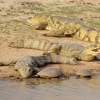 By Jim Stevenson
By Jim Stevenson
I flew in midday and had a lovely homecoming to Galveston. There were still ten Sandhill Cranes* along Stewart Road near Alice Anne’s farm, lots of tame Green-winged Teal in the Laffite’s ponds and drunk-looking BC Night-herons by the road. My yard was replete with robins and a waxwing, kinglet and Hermit Thrush, PLUS — a pair of (nesting?) Great Horned Owls. I’m thinking they may have taken over the caracara nest from last winter??? How wonderful it is to have my fat body home in my office chair. I leave for Louisiana (NOT to see my Suzie Anna) tomorrow to scout for the LA trip in April (among other chores), but being here even a day is sooooooo nice!
*On Tuesday when I left there were 59!
I have prepared a Gallery for you – my friends – and hope you will enjoy these non-birds of the wonderful country of Venezuela. I’m glad to be home, but I also miss Venezuela already. My dear friends like Mariana and her family, and John and his family reflect so much that is good and right about this, the World’s greatest country ecologically. With the Andes, Cordilleras, Llanos and Gran Sabana, no place on Early can rival the diversity of ecosystems and birdlife. But despite political leaders who are annoying (does that sound familiar?), the people of this Great Land have warm and gentle hearts and souls, and their goodness was extended to me and my friends at every turn. It’s not an easy place to travel, but what a rich and rewarding place.
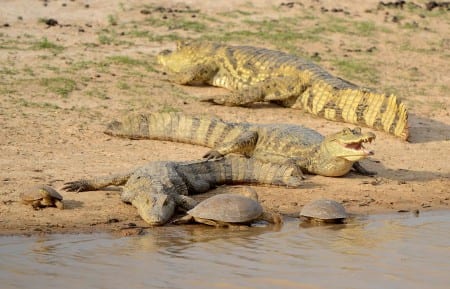
These I’ll leave to the Orkin man. These killer bees have made a lovely 7-pancake nest and they’re just piled in there by the hundreds. Can you see them? I have more questions than answers about them but none had anything to do with what I was gonna put on tomorrow’s breakfast - although I did waffle a bit). What? You wanna see it from another angle? OK!
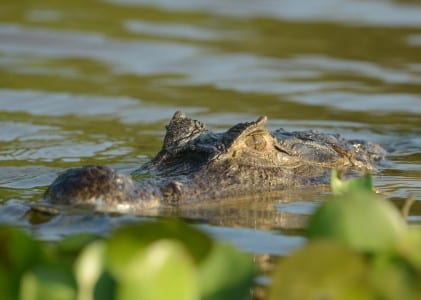
Here you can see the obvious spectacles on this large caiman, and the narrow, elliptical pupils for keeping out all but a little of the intense, tropical sun. Caimen are a lot like alligators (like their broad snout), but are found in Central and South America. Crocs have narrower snouts and may be in salt water as easily as fresh. The gavials have very narrow snouts like gar and live in the area around India, mostly. Only two species – the salty* of Australia and the Nile of Africa have much of a history of attacking people. Our American Crocodile is a pussycat. *Estuarine
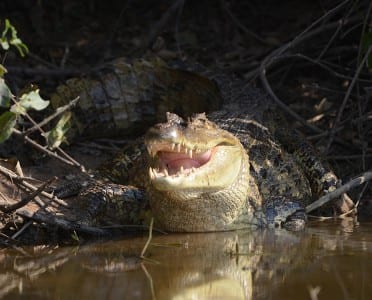
This is absolutely the biggest Spectacled Caiman I have ever seen. Ever. He is at least ten feet and seems in perfect condition. He is probably 80 years old and possible a century. You can see that his fourth lower tooth does not protrude up, which would indicate a croc (without the spectacles). (I have swum with alligators and caimen my entire life but I’d give this one a wide berth.)
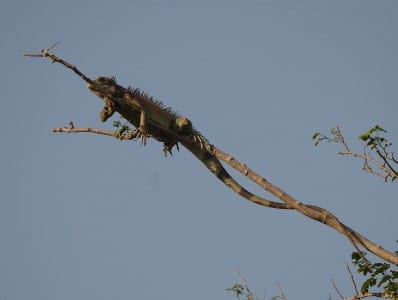
Not quite a croc but what a tail! This is a male Green Iguana getting every bit of sunlight possible. They are relatively inoffensive but I did have one person write and say they’ve had this species attempt to bite*. They normally eat leaves and such in the wild and the sharp spines in the back serve as inadvertent defense structures. *Can’t help but wonder if she was trying to iron out the wrinkles. 😉
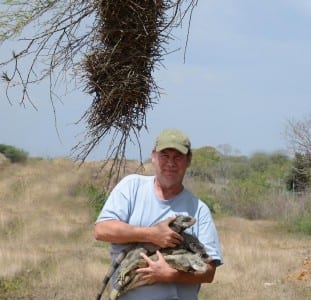
In the shade of a Thornbird nest, I seem to have my hands full with Green Iguanas. It is so easy for me to handle these four female iguanas, why can’t I, oh, never mind. Behind me is the dry country of Eastern Venezuela, replete with a thornier nature than the final exams I used to give. Don’t worry; I turned the lizards loose.
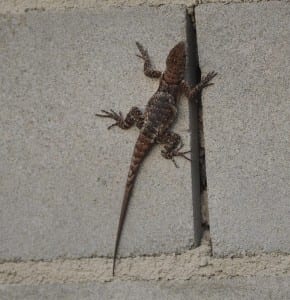
There’re 3000 lizard species on Earth, a full thousand more than snakes. This one appears to be related to our swifts (genus Sceloporus) although the head’s too small and the back not armored enough for our fence lizards. Their claws allow them to scale brick and rocks with amazing speed, not unlike the treefrogs and their suction cup toes.
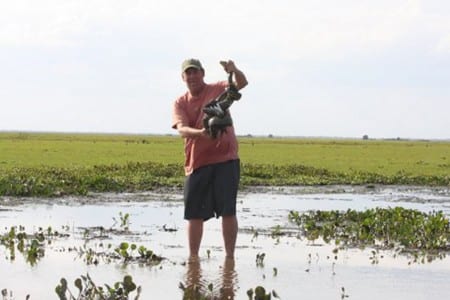
Here is Jim the Adventurer hopping out of the tour boat, after shucking his shoes and socks, catching an 8-foot anaconda WHILE IT CONTINUES TO CONSTRICT A DUCK! (That’s the third anaconda I’ve caught there so they’re kinda used to me!) This is the most wicked non-poisonous snake on Earth, with HUGE teeth and a really terrible disposition. Their scientific name means, “That which bites quickly.” I put him down gently and he went right on constricting the hapless duck, which I named, “Teitjen.”
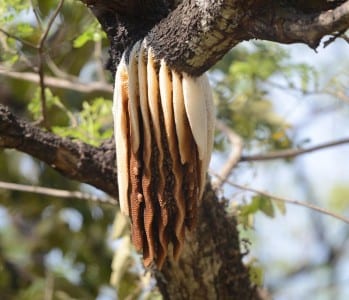
These I’ll leave to the Orkin man. These killer bees have made a lovely 7-pancake nest and they’re just piled in there by the hundreds. Can you see them? I have more questions than answers about them but none had anything to do with what I was gonna put on tomorrow’s breakfast - although I did waffle a bit). What? You wanna see it from another angle? OK!
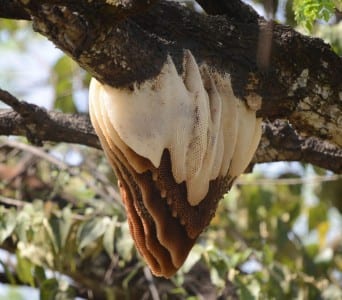
You can’t help but appreciate the octagonal shapes of the vents, and the layers seem to become more pigmented with time. Bees, ants and termites are social insects, doing better in a colony than separate. There are jobs for the different casts of the members, and it’s predestined, for the most part, what they’ll “bee.” I don’t think I’d make a very good social insect.
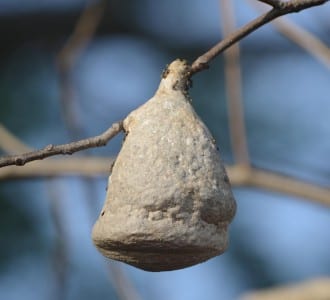
This is a hymenopterid nest akin to guinea wasps, and one I’d give a full berth. These are carnivores and kill hundreds of insects and possibly other critters daily. The nest seems to be chewed up pulp, reminding me a bit of sea squirts. I have four of my graduate school professors on this list, and if they’d like to chip in to any of this – or any others – chirp!
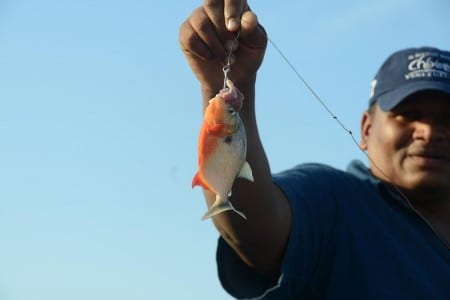
This is my amigo that took us to the swamp to see Sunbittern, Agami Heron, Hoatzin and many other great birds. Every February, no problem! He learned the trade from his father, Antonio Senor, and he’s now the best I’ve ever seen. (I’m still the funniest.) At this place where I take clients, they catch piranha and feed us them for supper. (Infinitely preferable to being fed TO them.) This is obviously the Red-breasted Piranha, which may be the most dangerous. Please don’t ask me if I’ve swum with them… OK, since you asked: There is a now-man in Tallahassee named Gavin Boone, the son of a wonderful former sheriff there. I took the boy and another football player at the high school where I taught, to Venezuela. We were shooting a video involving the Llanos and an anaconda, and while wearing Gavin’s shirt, I emerged from the water with a nice, round hole in the rather new shirt. There are thousands of piranha there.
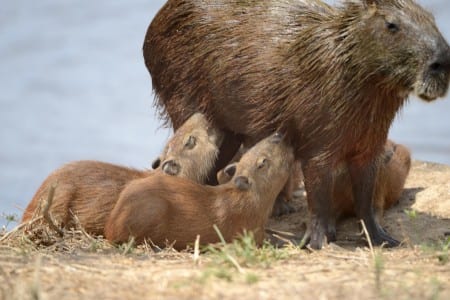
Capybara* are the World’s largest rodents, and this gal has her hands full! *Name meaning “nutria on steroids”? 😉 Caiman do a number on the smaller ones but also anaconda will grab them and yank ‘em under, not squeezing them but the freaking animal drowns. It’s a tough life out there in the Llanos!
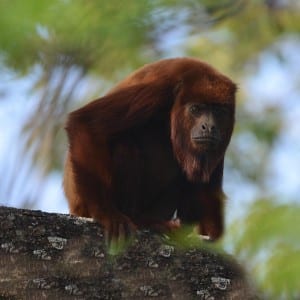
With as much as this resembles my Uncle Red, it’s actually a large Red Howler. This species is usually red in Venezuela but more often black in Costa Rica, where many of you have seen them. This is a big male, and seems to be more curious than anything. There are no predators like Harpy Eagles in this area, so he’s just wondering what I’m doing on his turf.* *When I took Gavin and JD Carlson (kicker for Leon’s football team, & later Michigan), we went up to the top of the national park before dawn, with howlers just hollering, and I told the guys those were jaguars. Can you imagine ME pulling a gag like that? I was a zoology and marine biology teacher for many years and kids were easy fun!
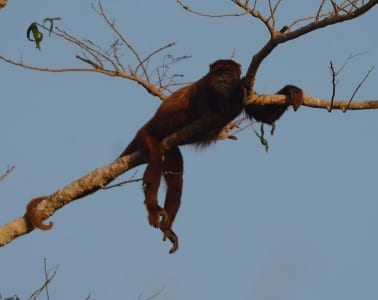
This female howler is relaxing like only a monkey can (possibly only like a female can). They prolly enjoy their time without young, as it’s very time consuming for the females. It is truly amazing to watch howlers (or other monkeys) negotiate through the canopy, as only that suborder can. Note the narrow hips that tree-dwelling primates have, as opposed to females that live on the ground. Some scientists believe that led to (us) having larger brains. (But then there’s the way we act…) 😉
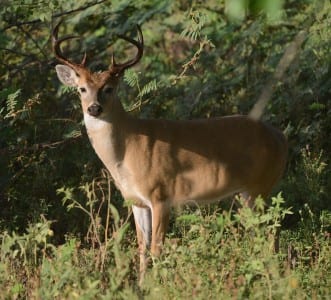
Deer are not commonly seen in Venezuela but the Hatos like El Cedral are exceptional. This is obviously a buck, with a real up-and-coming rack. I believe these are horns, as they are permanent, as opposed to antlers in caribou (and others) that are shed annually. Deer are one of many ungulates, meaning mammals with hoofed feet. (And that’s the extent of my mammalogy.)

 Posted in
Posted in 























